- Jul 17, 2009
- 10,878
- 66
- 291
Don't worry, this isn't that kind of thread.
Indeed, my intention here is to describe, examine, discuss, and perhaps learn more about the number one weapon in the chicken's offensive/defensive arsenal: The Stink-Eye.
Lesson One: What is a stink-eye?
There is a common misconception as to what constitues a stink-eye, in relation to chicken. The stink-eye itself is not an action on the part of the chicken. Indeed, the best stink-eyes occur through inaction. Usually, the chicken becomes very still, cocks its head, and attempts to intimidate the onlooker. This in itself is not the "stink-eye". The stink-eye occurs when the the person observing said chicken becomes uncomfortable and may wonder, "Is this chicken going to peck out my heart?" It is the onlooker who creates the stink-eye by seeing it, not the chicken by giving it.
Do not worry if you find this concept difficult at first. Soon you will be an expert in the stink-eye. As you become more familiar with the stink-eye, you may find yourself wondering, "If a hen gives a stink-eye in the nesting box, and there was no one to see it, did it ever really happen?"
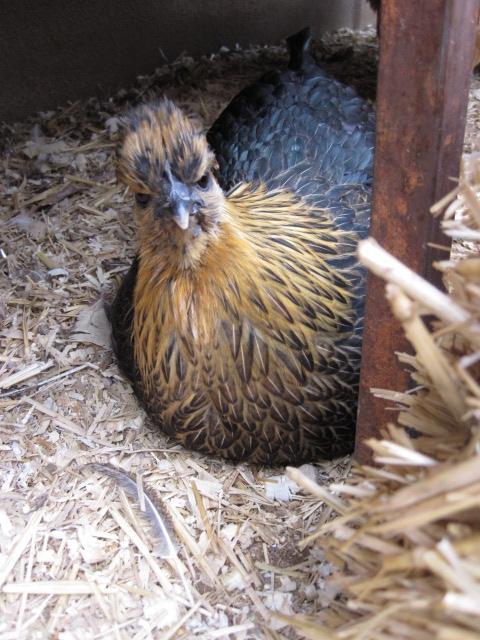
Lesson Two: Focusing on the Eye(s) Itself
Still, there is more to the stink-eye. An intimidating stance alone does not constitute a stink-eye. Many have heard the phrase, "The eyes are the windows to the soul." In the case of a chicken-induced stink-eye it may be more accurate to say, "The eyes are going to suck out my soul."
A quick comparision:
An intimidating stink-eye:

An intimidating stance, but no stink-eye:
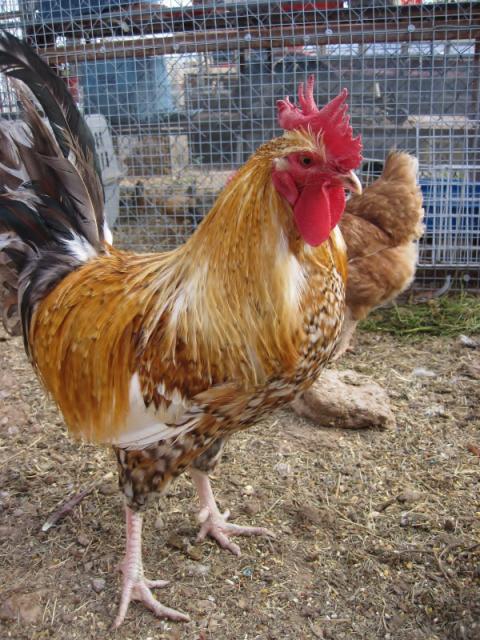
Lesson Three: Capturing the Stink-Eye with Photography
The stink-eye by its very nature, is fluidly subjective to the observer. As a result, it is extremely difficult to capture that moment of extreme stink with a camera. With a little practice, and a few rules of engagement, it is easy to get that "perfect" picture of the stink-eye.
Rule 1: Closer is not better. First, it puts the photographer in pecking range. Second, too close and all you have is fuzzy picture. It is hard to be intimidated when the onlooker cannot see the intimdator. For this reason, chickens in motion or flash pictures often do not capture the stink-eye. For example: The following hen would like nothing better than to peck out my eyes. Still, the viewer cannot clearly see her intent, and thus has not been stunk.
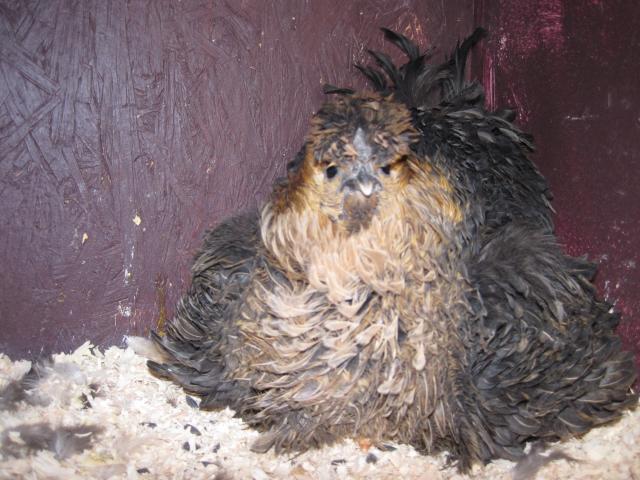
To prevent missing a perfect stink-eye, back up and use a larger resolution. The picture can always be cropped later on.
Rule 2: If the chicken does not appear peeved, on gaurd, or somehow evil---then there is no stink associated with it. All you have is a picture of a chicken, with the eye featured.
Stink-eye:
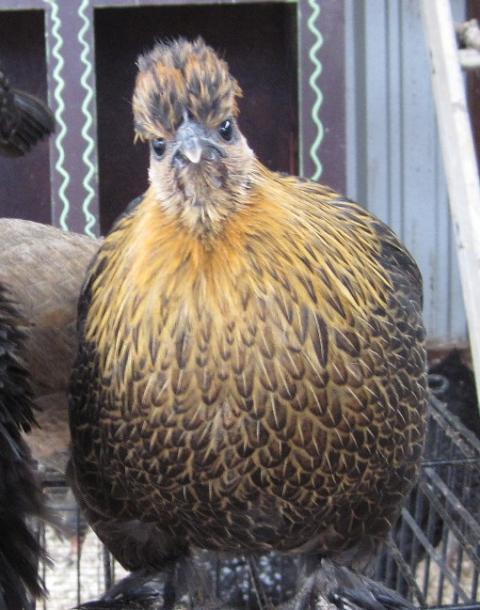
Not a stink-eye:
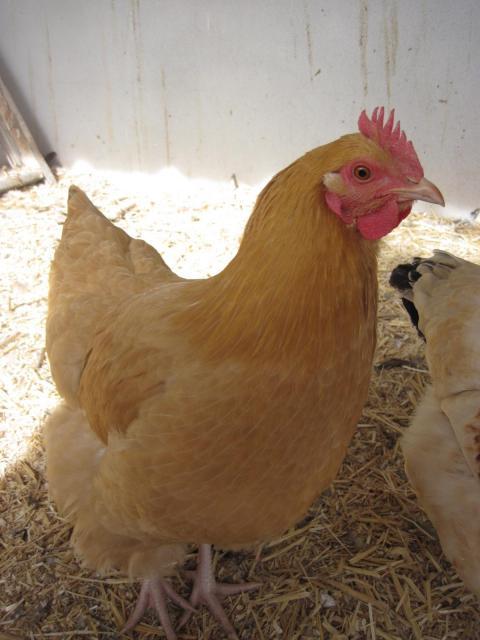
Not a stink-eye:
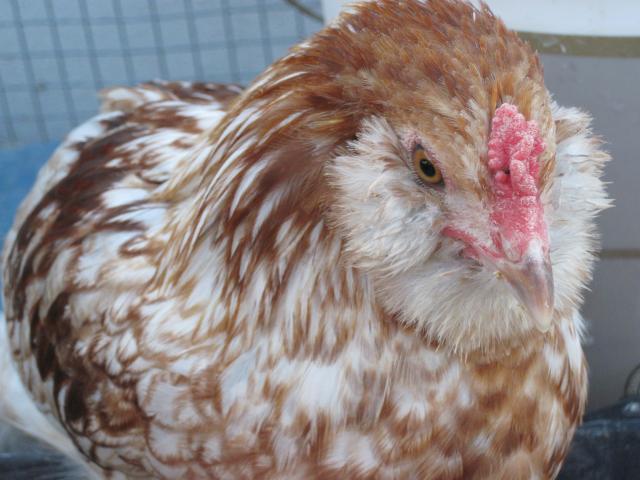
Rule 3: Composition and body language often make or break a good stink-eye capture. Be sure to capture the subject as whole, rather than just going for the stink-eye itself.
Stink-eye:

Not a stink-eye:
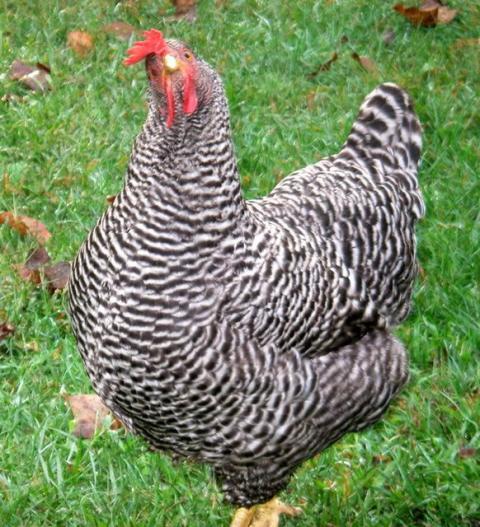
(photographer unknown)
Lesson Four: The outside observer.
Oftentimes the photographer makes the mistake of associating the afterburn of the stink with the picture taken, rather than objectively judging the picture on its level of stinkiness. So when choosing a stink-eye picture, the photographer must step back and think, "If I had not taken this picture, would I still be shaking in my boots?"
While this hen is clearly thowing down a stink-eye, the picture as a whole leans towards goofiness rather than stink. The viewer wants to laugh, rather than run screaming.
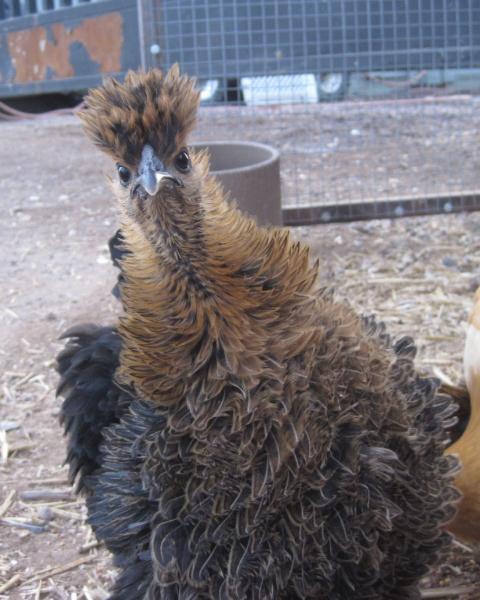
Well, that is our lesson for today! Your homework: find and post pictures of your best stink-eye.
ETA: Don't forget to study before you post. Good-natured heckling by the class is allowed, so long as it stays within the BYC Rules and Regs.
Next week: Chicken math, revisted.
Indeed, my intention here is to describe, examine, discuss, and perhaps learn more about the number one weapon in the chicken's offensive/defensive arsenal: The Stink-Eye.
Lesson One: What is a stink-eye?
There is a common misconception as to what constitues a stink-eye, in relation to chicken. The stink-eye itself is not an action on the part of the chicken. Indeed, the best stink-eyes occur through inaction. Usually, the chicken becomes very still, cocks its head, and attempts to intimidate the onlooker. This in itself is not the "stink-eye". The stink-eye occurs when the the person observing said chicken becomes uncomfortable and may wonder, "Is this chicken going to peck out my heart?" It is the onlooker who creates the stink-eye by seeing it, not the chicken by giving it.
Do not worry if you find this concept difficult at first. Soon you will be an expert in the stink-eye. As you become more familiar with the stink-eye, you may find yourself wondering, "If a hen gives a stink-eye in the nesting box, and there was no one to see it, did it ever really happen?"

Lesson Two: Focusing on the Eye(s) Itself
Still, there is more to the stink-eye. An intimidating stance alone does not constitute a stink-eye. Many have heard the phrase, "The eyes are the windows to the soul." In the case of a chicken-induced stink-eye it may be more accurate to say, "The eyes are going to suck out my soul."
A quick comparision:
An intimidating stink-eye:

An intimidating stance, but no stink-eye:

Lesson Three: Capturing the Stink-Eye with Photography
The stink-eye by its very nature, is fluidly subjective to the observer. As a result, it is extremely difficult to capture that moment of extreme stink with a camera. With a little practice, and a few rules of engagement, it is easy to get that "perfect" picture of the stink-eye.
Rule 1: Closer is not better. First, it puts the photographer in pecking range. Second, too close and all you have is fuzzy picture. It is hard to be intimidated when the onlooker cannot see the intimdator. For this reason, chickens in motion or flash pictures often do not capture the stink-eye. For example: The following hen would like nothing better than to peck out my eyes. Still, the viewer cannot clearly see her intent, and thus has not been stunk.

To prevent missing a perfect stink-eye, back up and use a larger resolution. The picture can always be cropped later on.
Rule 2: If the chicken does not appear peeved, on gaurd, or somehow evil---then there is no stink associated with it. All you have is a picture of a chicken, with the eye featured.
Stink-eye:

Not a stink-eye:

Not a stink-eye:

Rule 3: Composition and body language often make or break a good stink-eye capture. Be sure to capture the subject as whole, rather than just going for the stink-eye itself.
Stink-eye:

Not a stink-eye:

(photographer unknown)
Lesson Four: The outside observer.
Oftentimes the photographer makes the mistake of associating the afterburn of the stink with the picture taken, rather than objectively judging the picture on its level of stinkiness. So when choosing a stink-eye picture, the photographer must step back and think, "If I had not taken this picture, would I still be shaking in my boots?"
While this hen is clearly thowing down a stink-eye, the picture as a whole leans towards goofiness rather than stink. The viewer wants to laugh, rather than run screaming.

Well, that is our lesson for today! Your homework: find and post pictures of your best stink-eye.
ETA: Don't forget to study before you post. Good-natured heckling by the class is allowed, so long as it stays within the BYC Rules and Regs.
Next week: Chicken math, revisted.
Last edited:














